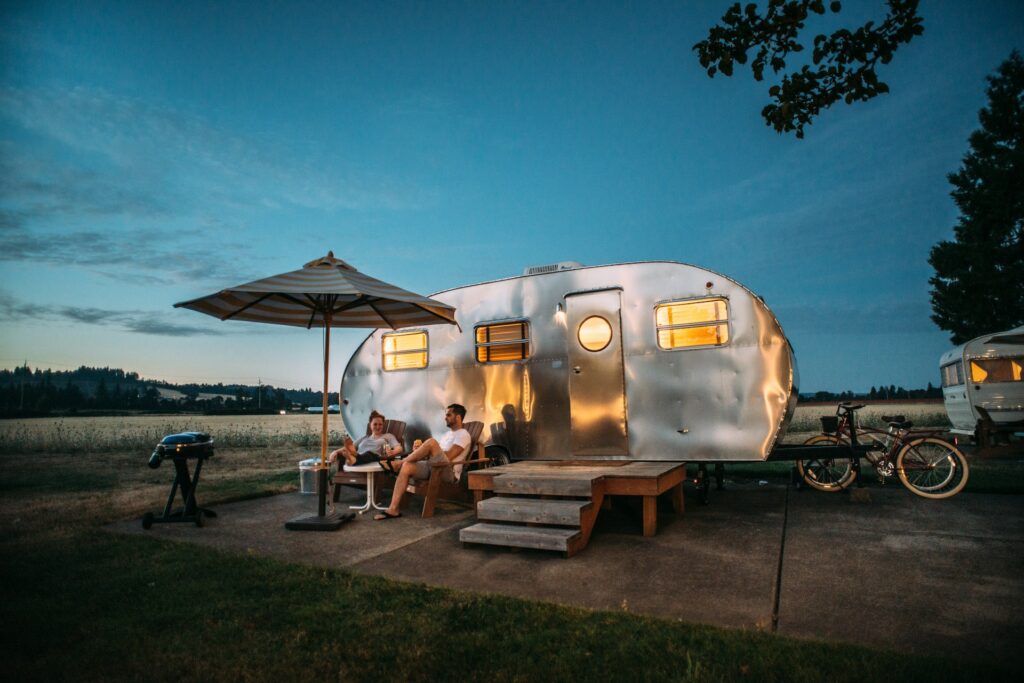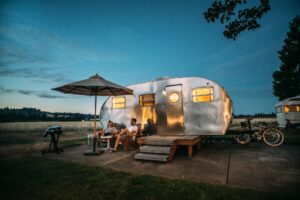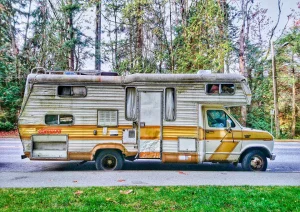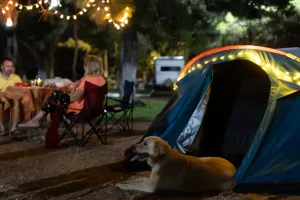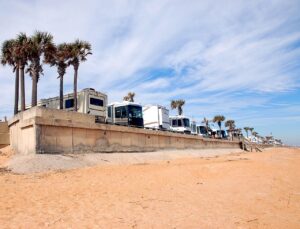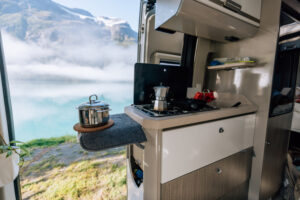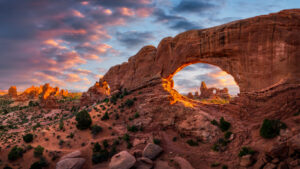Vacationers hit the road with motorhomes and travel trailers in droves during the pandemic. It made sense. We could all abide by social distancing rules and enjoy the soothing balm of nature.
We also added a lot of RV enthusiasts to our numbers. It’s great for the community but tough on us all when we want to reserve a campsite! Today we’re going to talk about what’s happening and how you can still find a great place to camp in your RV, even here in busy Southern California.
Why So Crowded?
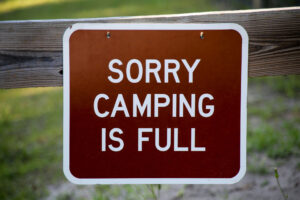
Record numbers of RVs were shipped and purchased during the pandemic years. Over 600,000 were shipped in 2021 alone, nearly 100,000 more than the previous record in a single year.
When we were able to travel by plane and stay in hotels again, those vehicles did not vanish. A lot of folks discovered that they loved the RV lifestyle and the time spent outdoors and have become active participants in the RV community.
Such rapid growth made it hard for RV parks, national parks, and other RV campsites to keep up with the increased traffic. Some new parks have opened, and others are adding sites, but it will take a long while before they catch up.
RV vacationers are now struggling to find an open campsite. Before you could often find a weekend site on a whim but now reservations are backed up for months. Some places are booking out as far as a year.
So, like it or not, you’re going to have to adapt your RV lifestyle to this new reality. Let’s look at some adjustments you can make and still take the vacations you want, stay on the road for months at a time, or even RV full-time in this new booked-up world.
Types of RV Campsite Reservations
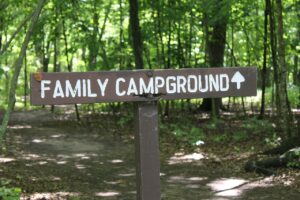
The most common type of RV campground reservation is the one made in advance online or by phone. Online booking usually offers the best, fastest access once reservations open.
But booking far in advance is not the only way to get a good campsite. Some campgrounds and RV parks offer first-come-first-served sites.
These are campgrounds for risk takers and early birds. You’ll need to get in line as soon as you can to have the best chance of getting one of the available spots. These types of reservations are most common on public lands, including national and state parks and some BLM lands.
Plan Ahead
If your RV lifestyle is all about vacations, the best thing you can do is plan ahead. It’s wonderful to be able to roam the country and stop wherever you please, but it just isn’t practical in a lot of areas.
So start your vacation planning early. If you travel in the summer, start planning now for this year and next year. Yes, it does put a damper on the spontaneity some RVers love, but it might just save your vacations.
The first thing to plan is a location. If you’d like to travel to a popular tourist destination during its peak season, you need to reserve a campsite at least six months in advance. Earlier, if you can.
Pros and Cons
There are obvious pros to planning and reserving your campsite far in advance.
- Peace of mind and a well-planned vacation
- Time to research other activities in the area
- Time to arrange work and family schedules
- Won’t ruin your vacation by having to stay at Walmart for the whole week
But there are some cons as well.
- Not for those who love spontaneous RV trips
- Difficult to know potential conflicts so far ahead
- Cancellation fees
That last one is a biggie. You probably will not get your deposit back if you cancel your reservation. You may even pay a penalty on top of that. It’s tough to know if you’ll have a child with the flu or a big work meeting half a year in advance and some of you won’t want to risk losing that deposit money.
National Parks
Different destinations and campgrounds have different rules about how far in advance you can reserve your site. National parks, for instance, often have a mix of sites you can reserve and those offered on a first-come-first-served basis.
You can usually reserve a spot in a national park six months in advance, to the day. Know when you will arrive and make sure you call or get online as soon as reservations open for your planned stay.
At least one park, Yosemite, opens its reservations in one-month blocks, five months beforehand.
National parks also often have limited space for larger motorhomes and travel trailers. If you need a back-in or pull-through space, be sure the park offers them. If it doesn’t, try a private campground outside the park.
The lesson? If you want to spend your RV trip in a national park, call or go online and find out the rules at that specific park. Don’t assume they all run on the same reservation system or that they all have space for the same number and type of RVs.
Private Campsites

Most campsites use the six-month rule. But as congestion continues to be an issue, you’ll find more that book further out. If you know what area you’re interested in, check the policies at nearby campgrounds.
The key to getting a site is often getting online the minute the reservation system opens for the dates your stay. It’s stressful, but not as stressful as finding yourself without a campsite for your long-awaited vacation.
There’s an App for That
There’s an app for everything. Campsite availability apps are extremely useful for RVers who want to research campground amenities, prices, locations, and availability all in one place.
In general, these apps compile a list of campgrounds in a given area to help you choose the one that has open spots that fit your needs. It’s common to be able to filter results based on the size of your motorhome or travel trailer, what you need for hookups, accessibility of dump sites, and more.
Some apps show places to pull in for a night like parking lots and rest stops as well as paid campgrounds or free BLM land. Most have comments or reviews from other app users. They’re an excellent way to check for last-minute cancellations at popular spots. Use your apps early and often.
There are a lot of RV camping apps available. Some of the more popular include Campendium, The Dyrt, Hipcamp, and Campspot. Each has a free version and a desktop site that allows you to browse what they offer. If you choose to upgrade to paid versions, you get either more features or an ad-free user experience.
You may decide to use a combination of apps to get all of the features you want.
More Tips and Hints
How hard it is to find an RV campsite depends a lot on where and when you plan to travel. In Southern California, sites can be tough to find all year. In other parts of the country, you’ll find more spots available in the early spring and late fall.
You’ll also have better luck if you avoid major tourist destinations. You’ll need to be online the minute reservations open for a spot at the Grand Canyon. If you choose smaller, lesser-known attractions, you’ll find greater availability and more peace and quiet.
No matter where you plan to stay, make sure they have everything you need. Not every campground has sites for large RVs. If you need a back-in or pull-through site, you’ll have fewer choices. If necessary, avoid campgrounds with a 10-year rule, and make sure you’re old enough to book a site (some campgrounds require you to be 25). Some campgrounds don’t allow kids or pets.
If you love a spontaneous RV trip, you can still get a good campsite. Use your apps, choose someplace off the beaten path, and be flexible about amenities.
There are a lot of RV campgrounds out there if you’re willing to try something out of your comfort zone. Never been boondocking? Maybe now is the time to go for it! Or look for small state or county parks near hidden nature gems.
Even in this era of scarce campsites, you can enjoy your preferred RV lifestyle. It may require a little more planning or learning to use some new technology, but it’s worth it. If your travels take you to Southern California, stop on by our full-service RV shop in Fontana and say hi to the Leisure Coachworks team!
